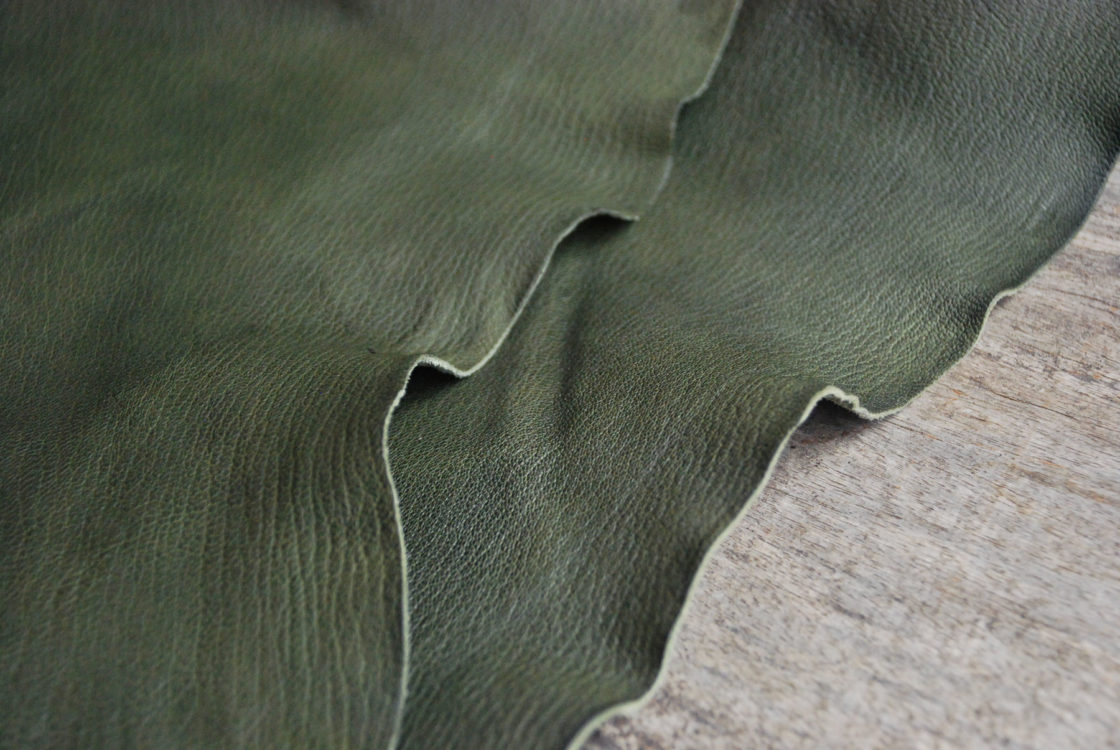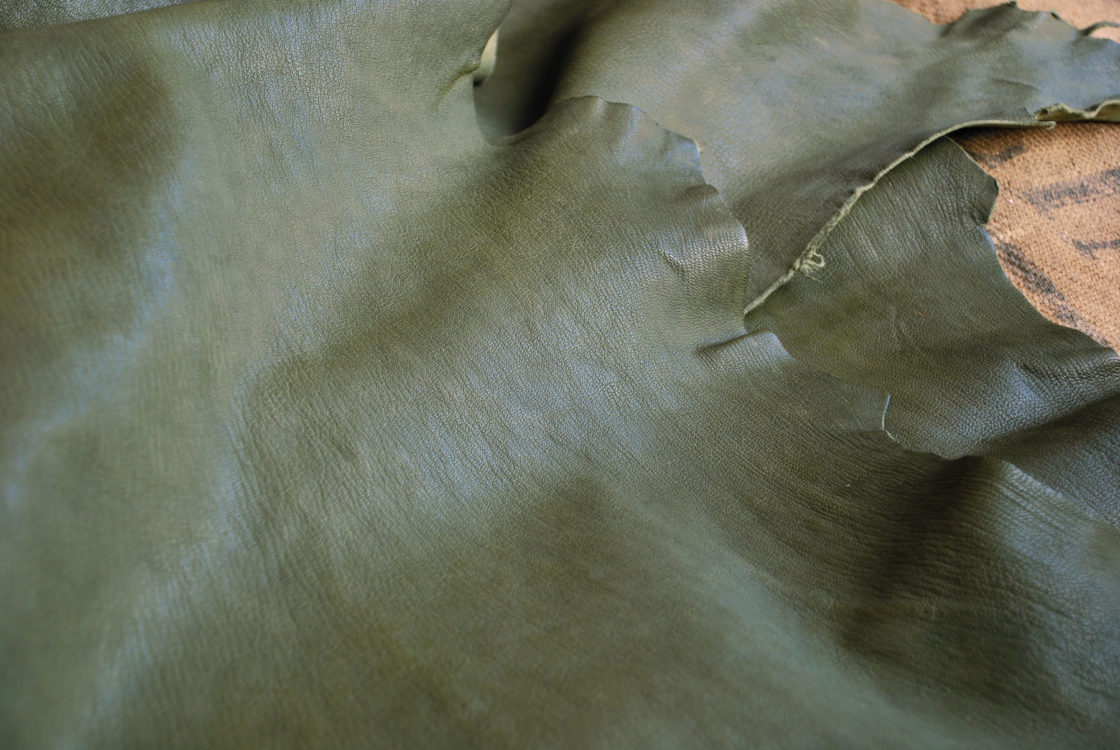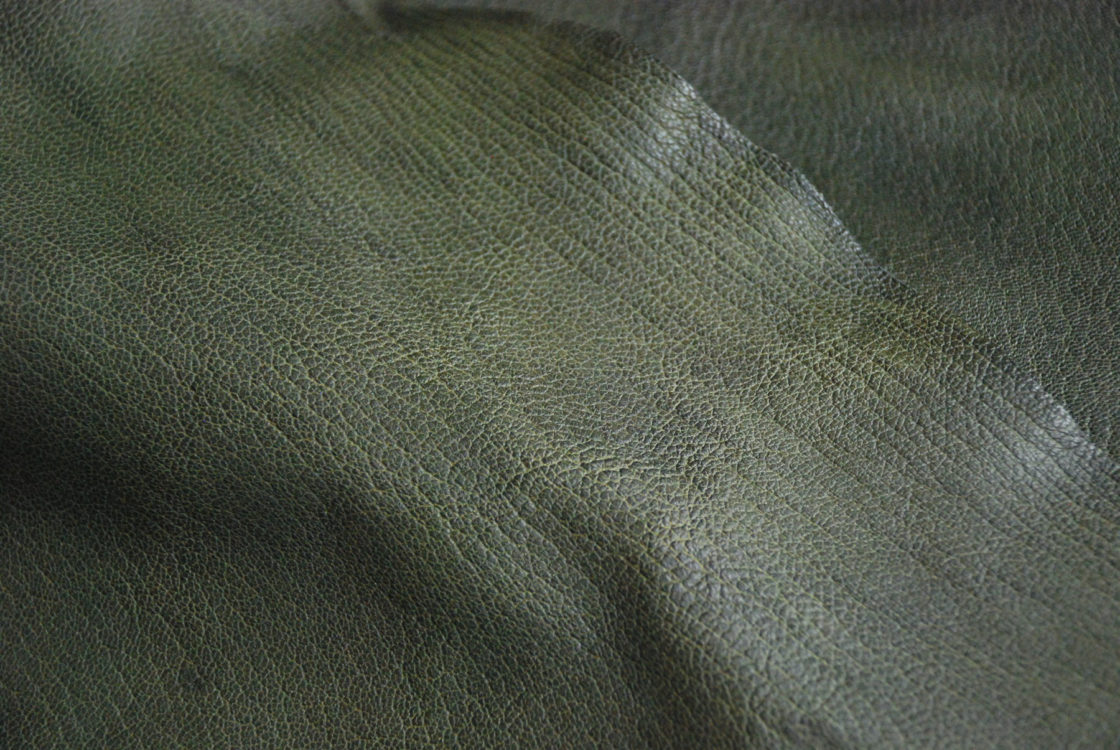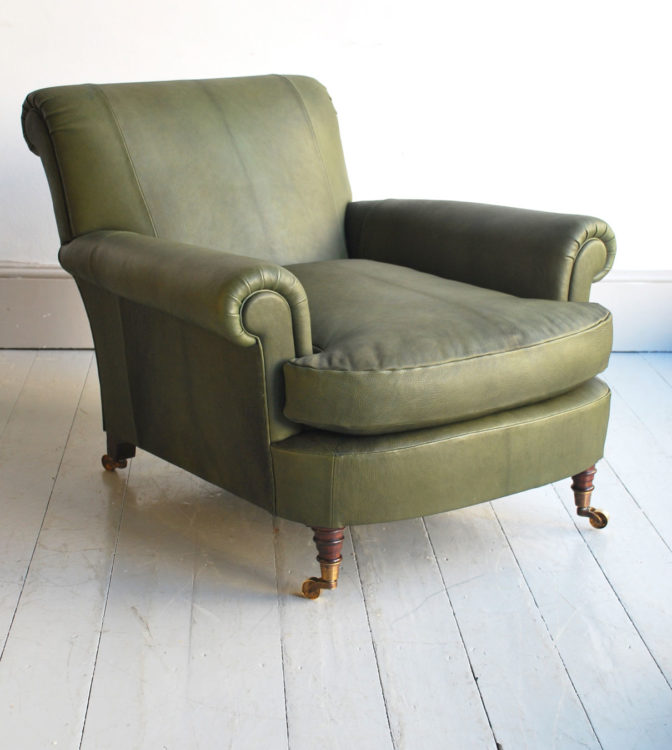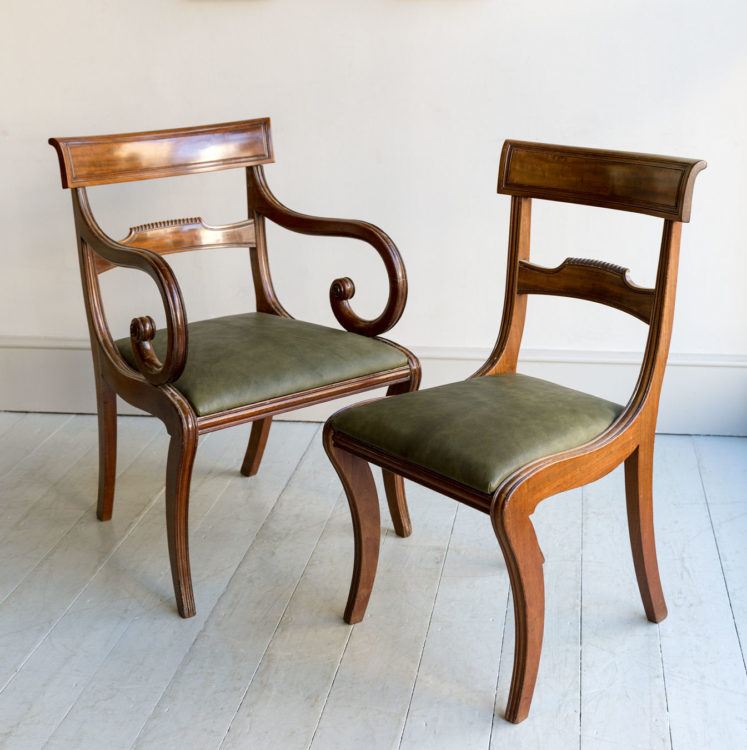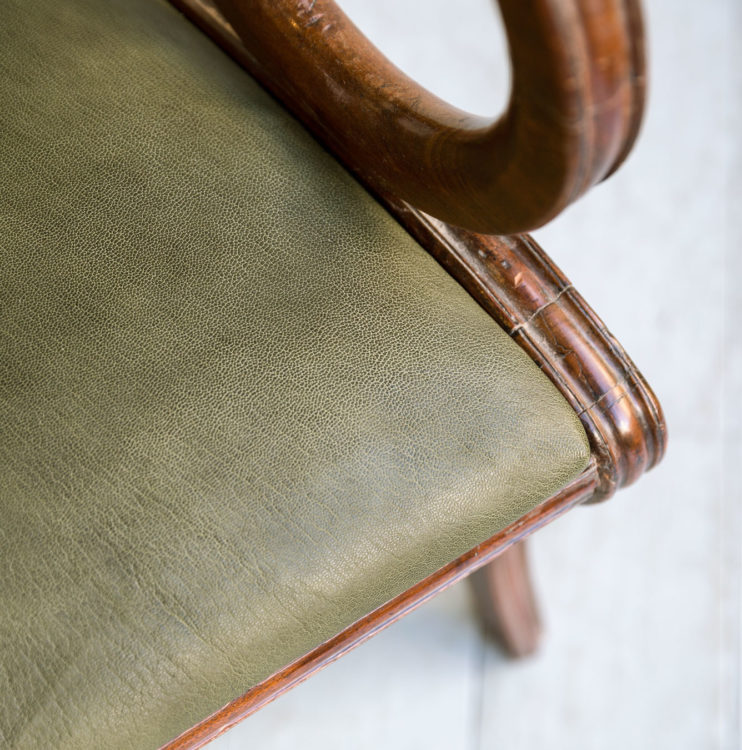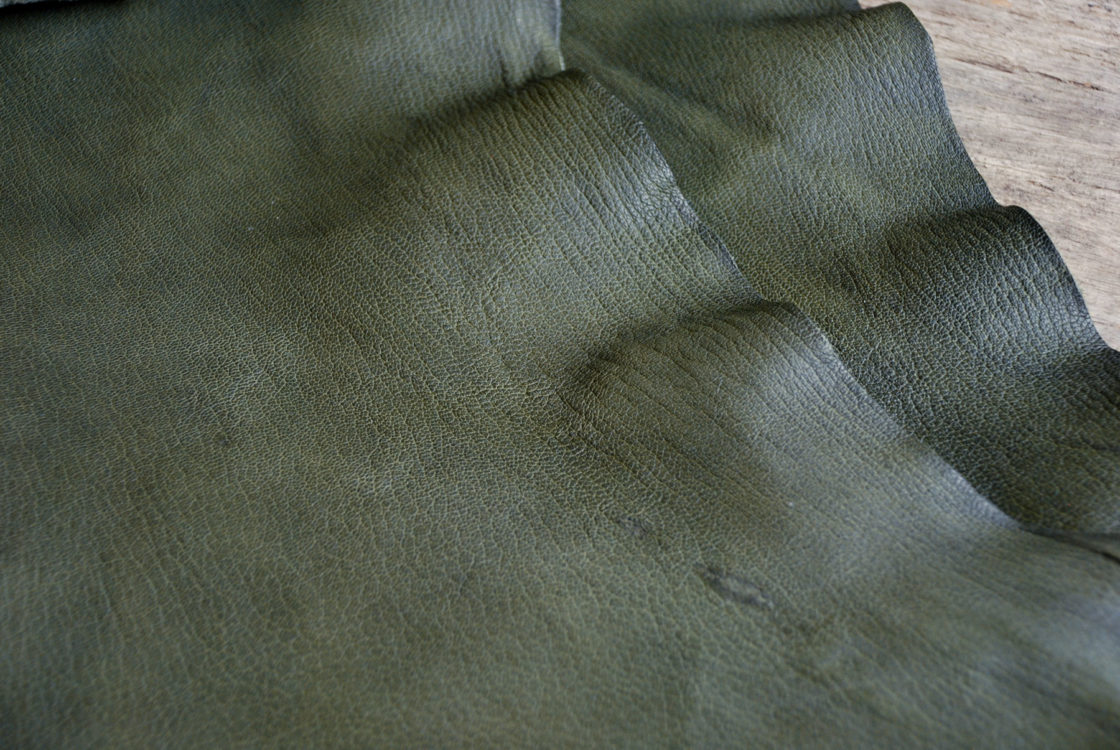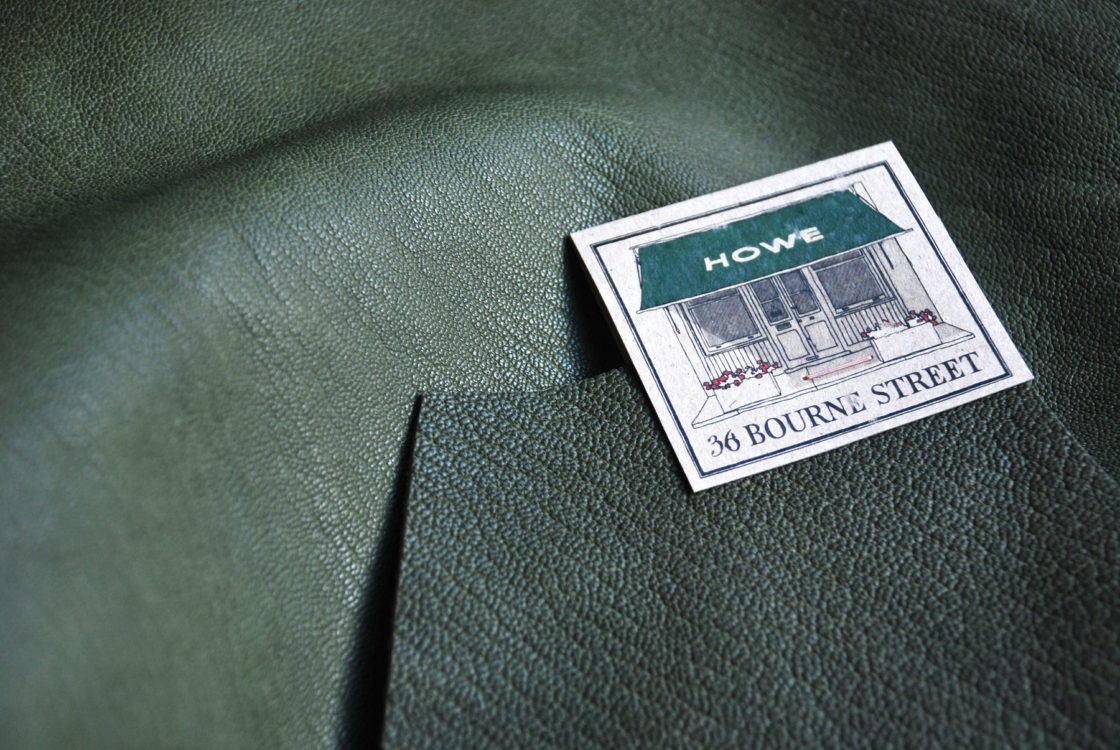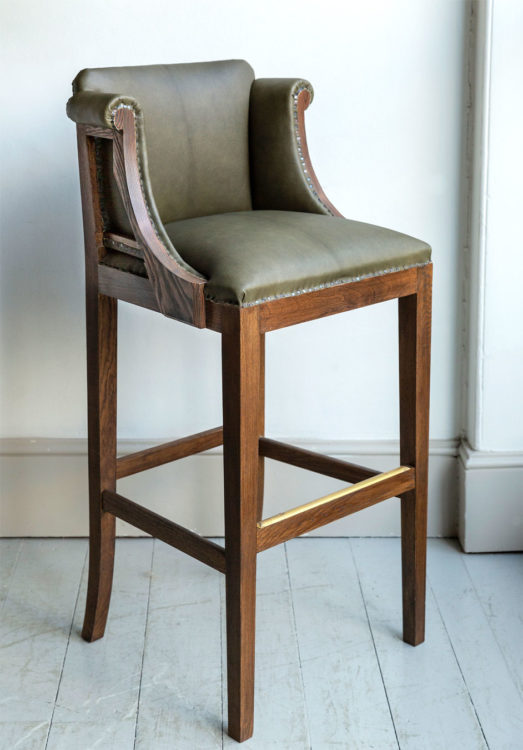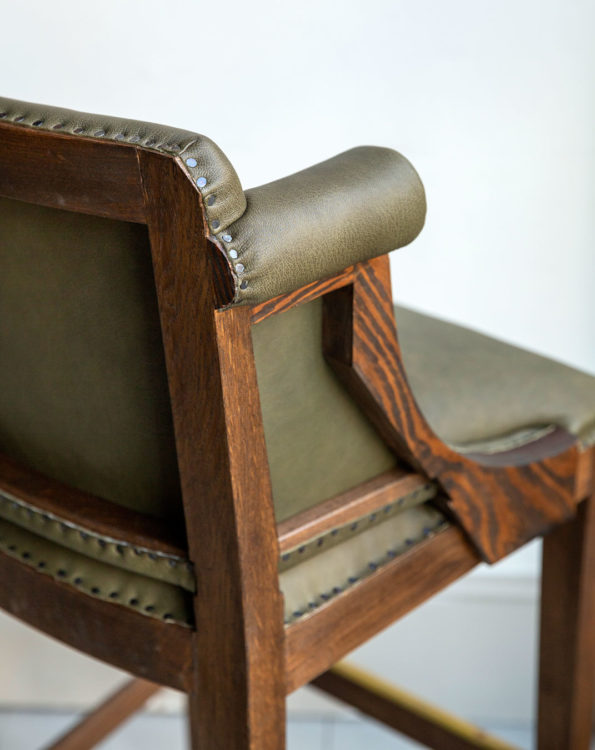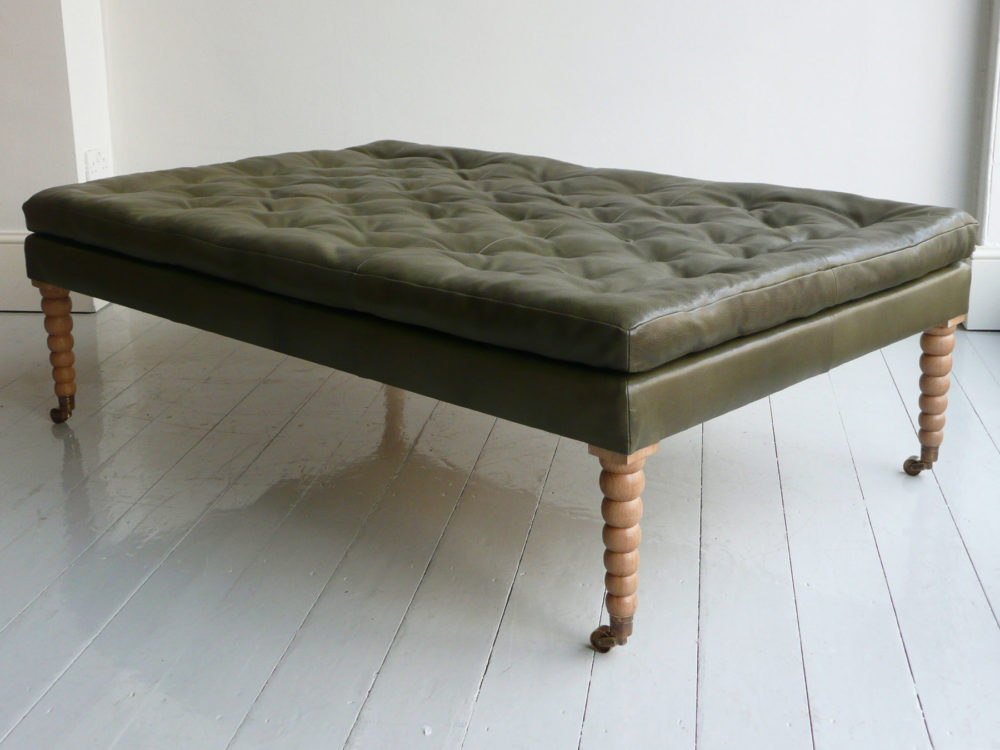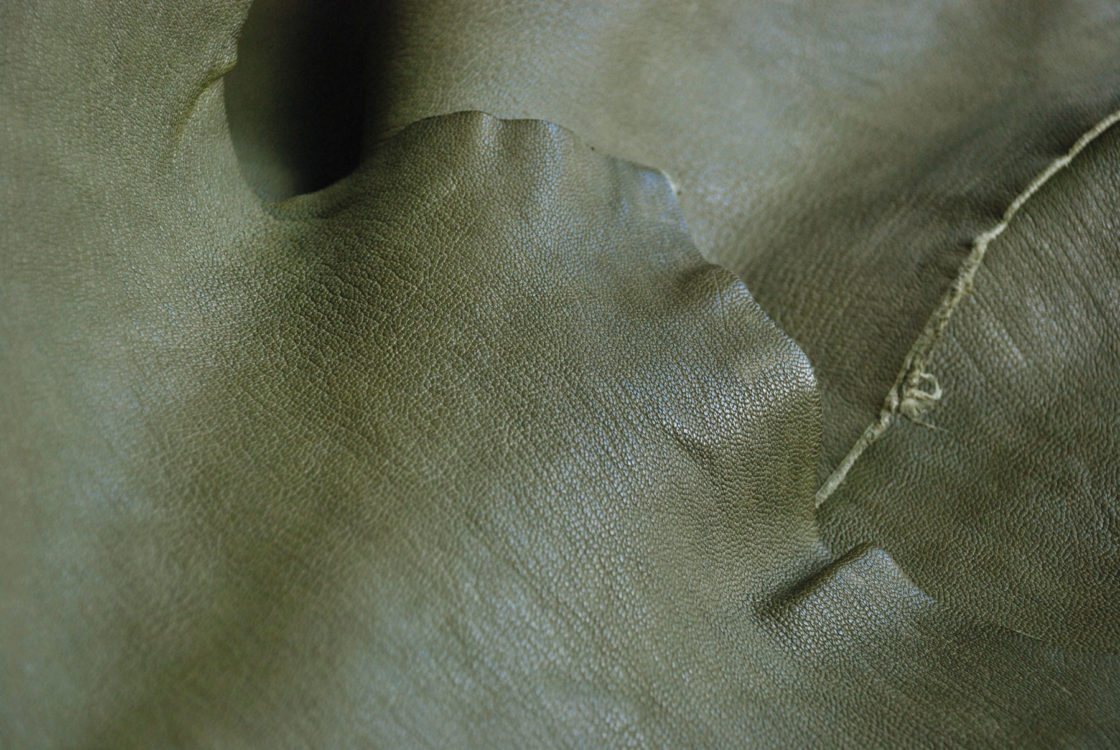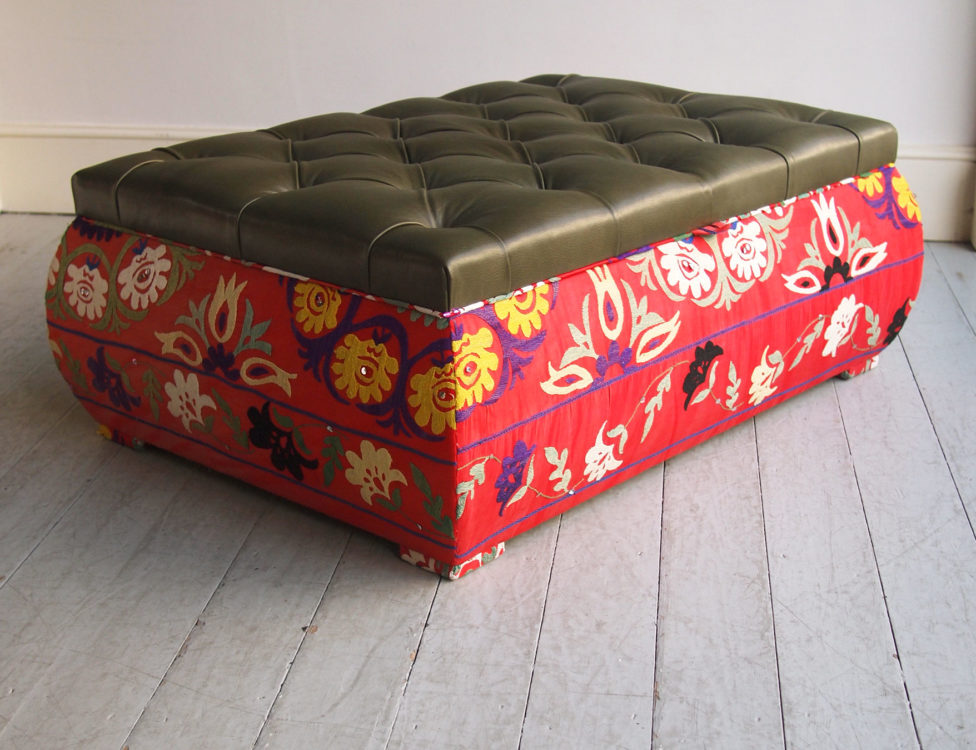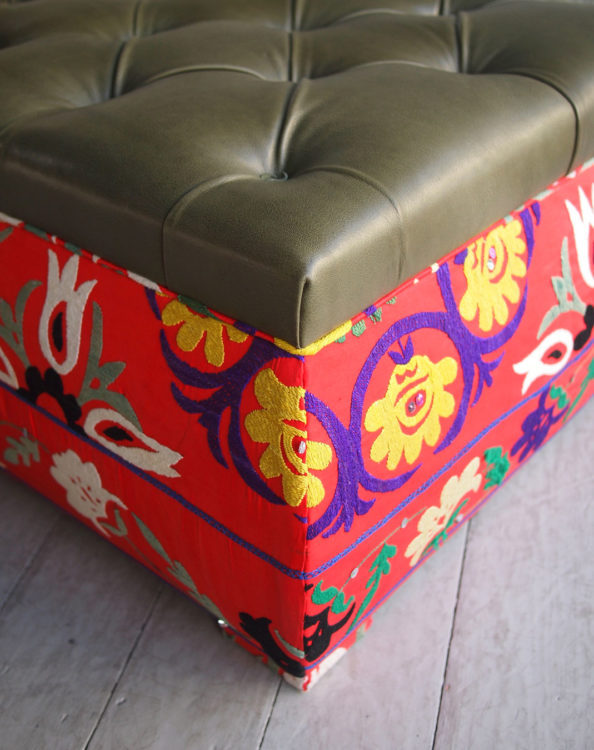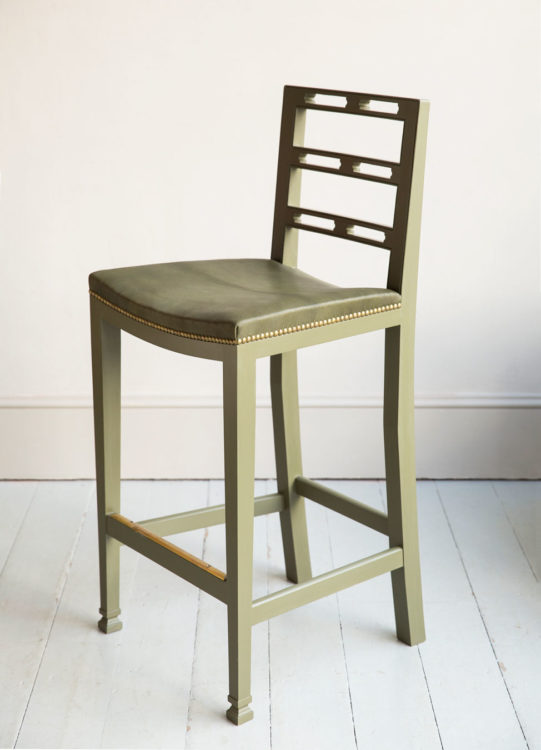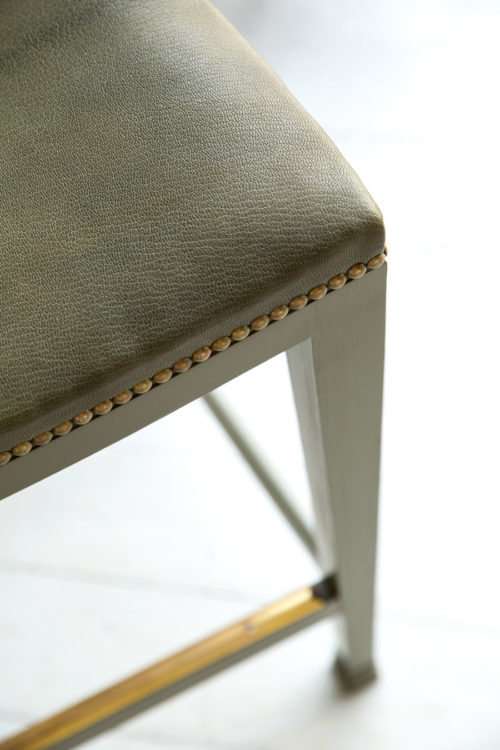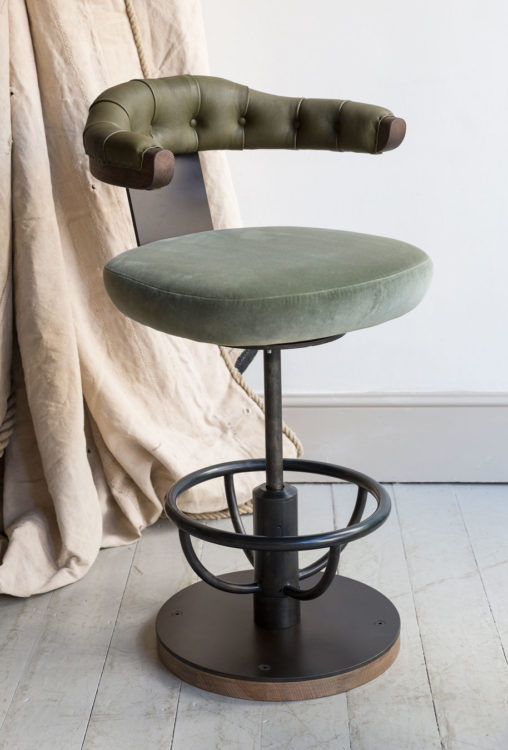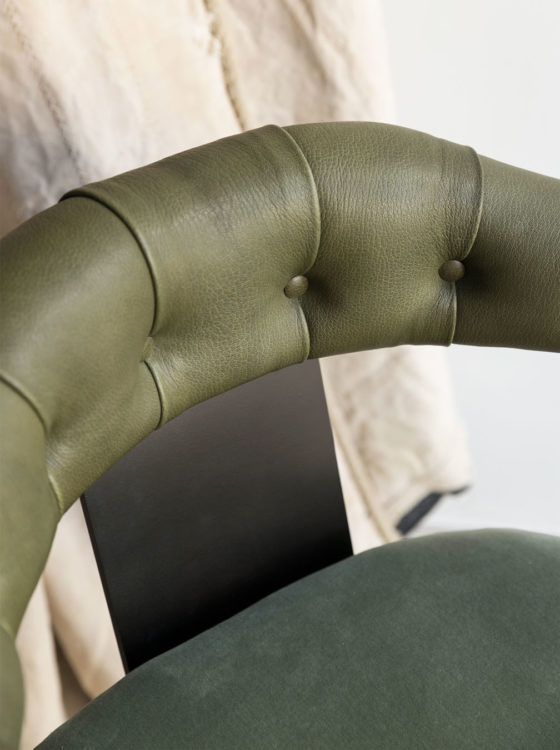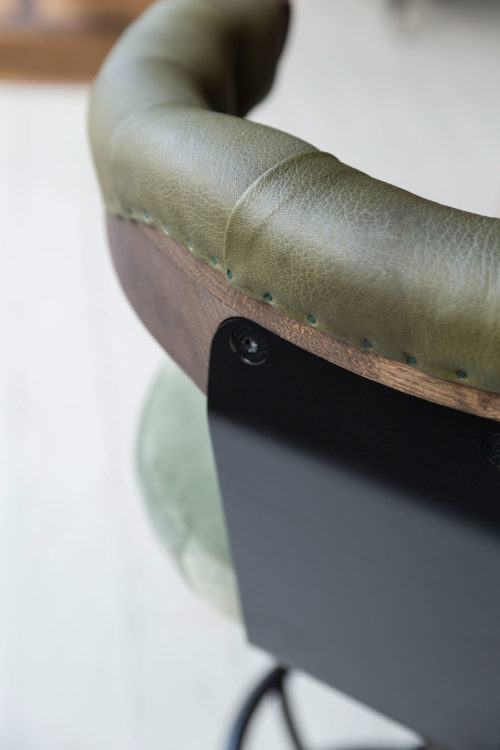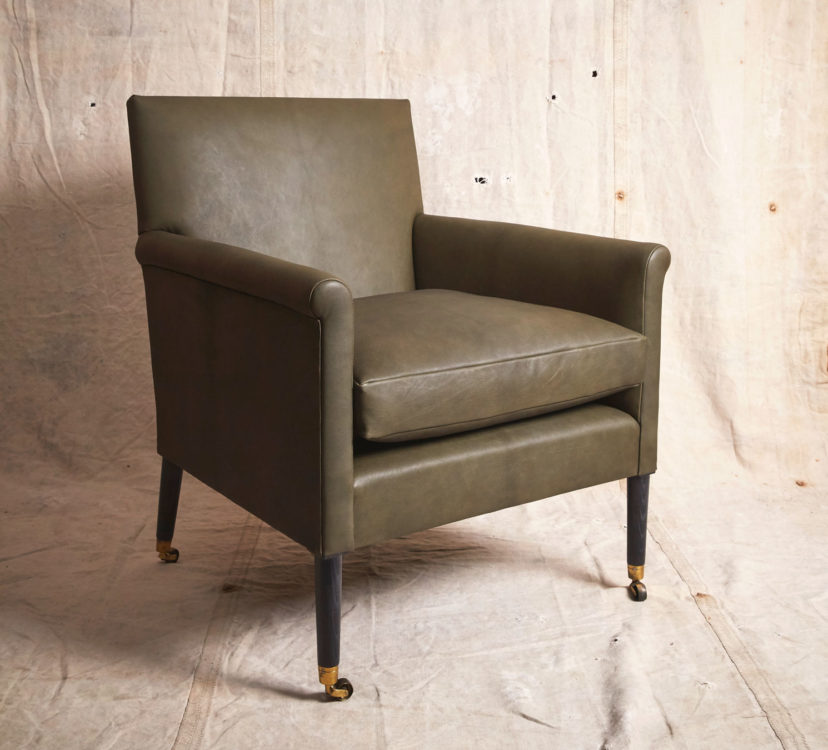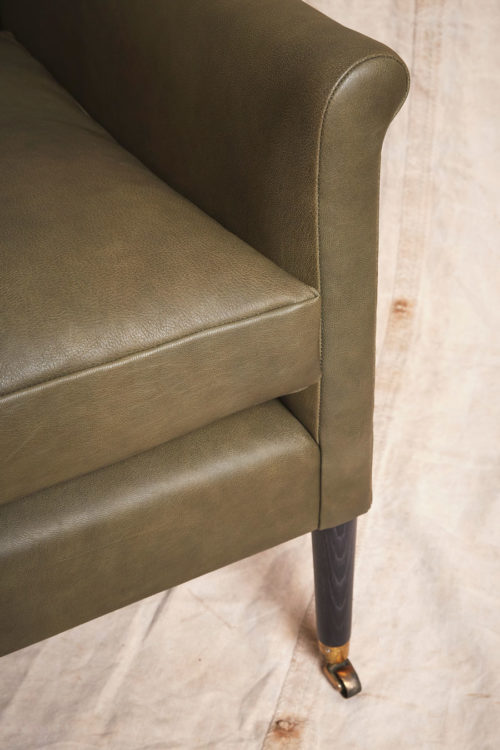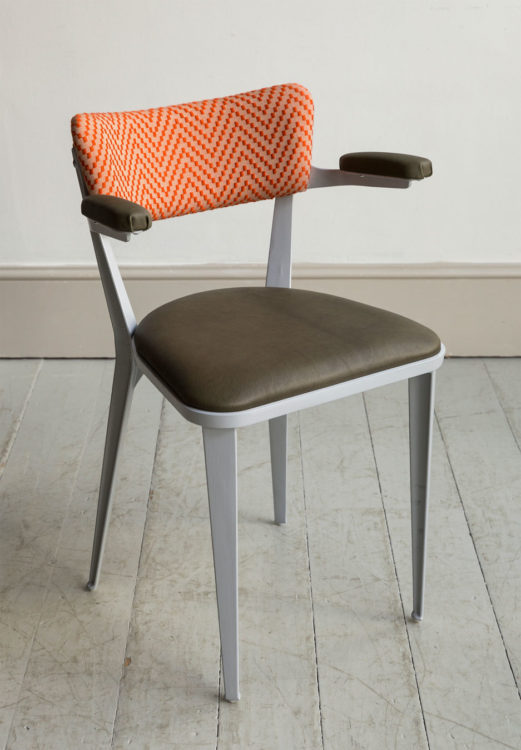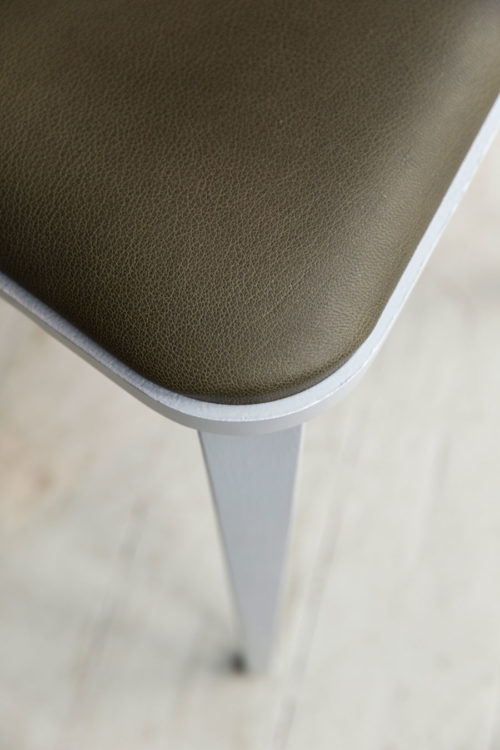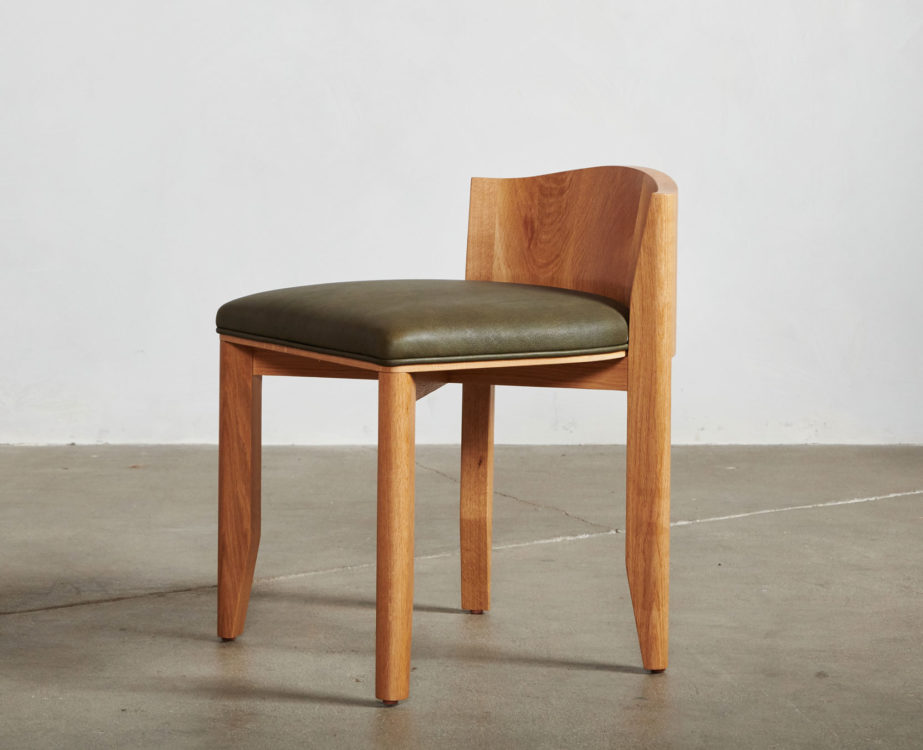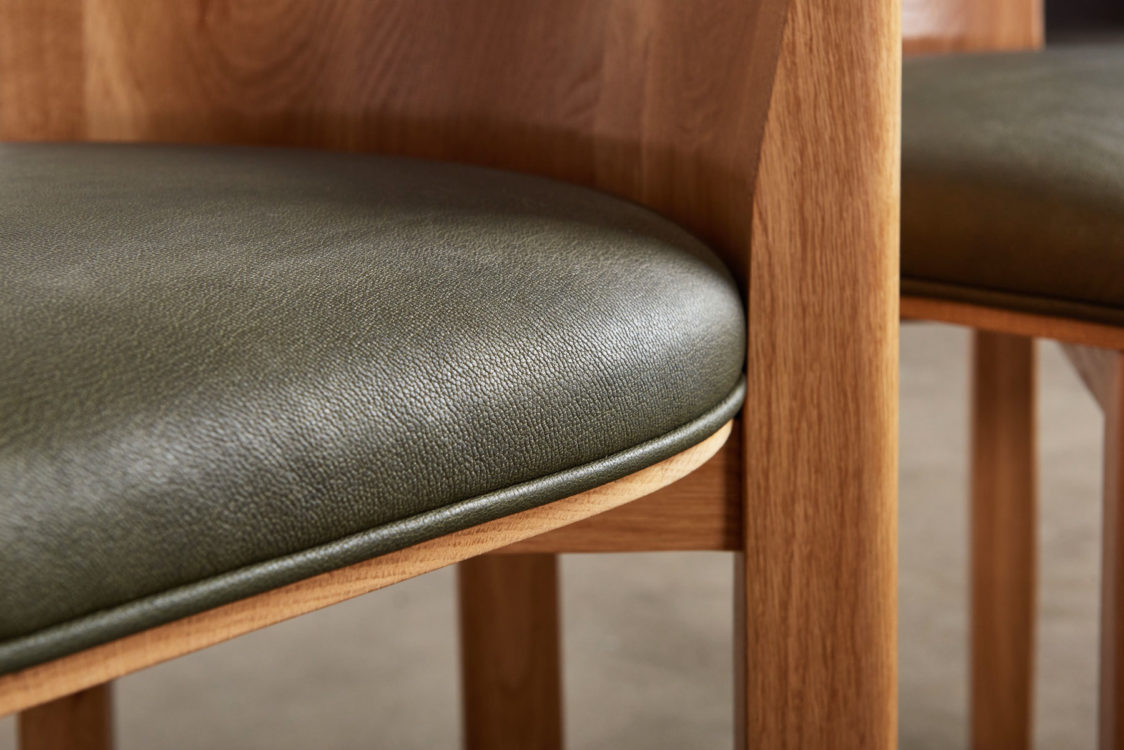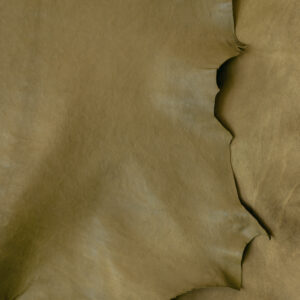Natural Maroc ‘Olive’
Our goatskin leathers are of the very finest quality because we insist on using the traditional and slow method of tanning before drum dyeing them to shade. We believe this is the only way to achieve a true ‘full grain’ leather, each skin displaying a beautiful, unique grain pattern like a fingerprint. Finished with a light layer of natural wax, this leather will develop a wonderful gentle patina over the years.
Our ‘Olive’ goat skin leather is preserved with a tannage of clever modern invention; a plant based compound which is without Chrome or any other harmful ingredients used in most modern leather production, whilst also enabling full water recycling in the production process. We use this new method for a few of our shades as it helps preserve the colour for longer, as some colours can naturally loose their intensity with prolonged exposure to sunlight. Our ‘Olive’ shade will still mellow and soften its colour over time when exposed to daylight, but along with the patina of marks and wear that would build with use, gives an overall attractive and unique character to the leather.
Our goats lived a free range life, roaming fields and lush scrubland in rural India. Because of this, the skins will always show unique marks and patterns that have naturally occurred. These can include scratches and blemishes, occasionally the odd small hole, differences in grain texture, spine lines and sometimes a dappling change of colour too.
All of these marks are typical and part and parcel of what real free range leather looks like – particularly leather like ours that has been traditionally drum-dyed, rather than the quick and disappointing modern method of spraying paint-like colour onto the leather surface, which coats it in a uniform layer and masks the realities and unique patterns of the leather’s surface.
We encourage clients to embrace the natural qualities of the leather, and also the fact that with time and use a unique and ‘genuine’ patina will build – an accumulation of scratches, oils from your hands, spillages, sunlight and wear. The leather will also burnish beautifully in the areas of most use, and all of these elements together contribute to the character that you typically find in sought-after leather covered antique upholstery.
Goatskin is a very durable leather with minimal stretch, whilst also possessing a supple and flexible handle. This makes it ideal for all types of upholstery, such as deep button-tufting, desk and table inlay, bookbinding, and for use in accessories and clothes. Its enduring robust character also makes it particularly popular in high-traffic commercial areas, like hotels and restaurants.
Skins can be successfully displayed using their suede side, although some dust and therefore colour-release can occur when the leather is new.
Leather Care
Leather is a strong material and should be lived with, used and enjoyed. In general it’s best to take a relaxed approach and let marks and stains build up to create an overall picture of patination and wear.
If you want a perfectly uniform and consistent look choose a mass-produced commercially sprayed leather!
We choose not to apply any further treatment such as stain resistance which is essentially a plastic coating applied on top. We try to supply our materials with a minimal amount of finishes applied, avoiding unnecessary chemicals.
All leather will naturally mellow and fade with exposure to daylight. The most drastic fading happens where the intensity of light is very strong and exposure occurs over long periods of time.
Contact with water (or other liquids) will mark the leather and over time build a unique patina and weathered look. Be mindful that spills and marks are impossible to remove. Choosing one of our very dark coloured leathers is the simplest strategy if you want to avoid a potential look of heavy patination and marking.
Panel Size Information
Goat skins are a lot smaller than cow hides.
The drawing below shows an example shape and size but the size can vary widely. They can be a lot smaller or a lot larger than these measurements.
For example, if you order 20 square foot of goatskin leather you may receive 2 skins of 10 square foot each, or 4 skins of 5 square foot each, depending on the current stock we have available.
THE SKINS YOU RECEIVE WILL BE A VARIETY OF SIZES. We cannot select particular sizes for you, but if you come to our studio in Camberwell, London, you are welcome to choose your own skins to exactly suit your requirements.
Details
- Name: Natural Maroc
- Colour: Olive
- Animal: Goat
- Thickness: 1.3 to 1.5mm
- Minimum order: 1 skin
- Skins range from: 8 to 12 sq ft
- Average skin size: 8 1/2 sq ft
- Recommended application: Suitable for high traffic areas, and on all sorts of furniture - from an antique armchair to a flat desk top, a commercial barstool to a deep-buttoned footstool.
- Fire retardency: Inherently passes Cigarette (BS 5852, part 1:1979, Source 0), Match (BS 5852, Part 1: 1979, Source 1) and Crib 5 tests
- Price: £32 per square foot, including UK VAT
To request a sample get in touch with us by phone or email.
Ordering
If you’d like to place an order just tell us the number of skins or the square footage you require.
We will select skins from the same batch, but we cannot accommodate further selection requirements.
Please note that CFAs are not applicable for leather, because tone, colour and grain texture vary from batch to batch, skin to skin and even within a single skin. Similarly it is very hard to accurately capture these qualities in photos so we do not, as a rule, supply photos of leather selections.
We encourage you to come to our studio in Camberwell, London and select the skins yourself from our current stock if you are worried about suitability for your job.
We’re happy to ship anywhere in the world! Customs duties and taxes may apply if purchasing from outside the UK and we cannot predict these charges. Please account for these and be prepared to pay them upon delivery.

